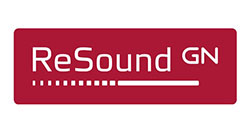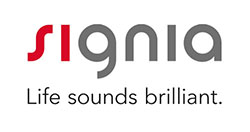Hearing Aids
Hearing Aid Types
There are about five separate categories that hearing aids are generally divided into.

Invisible in the Canal
Our Invisible-in-the-Canal hearing system packs clarity and power into the tiniest of packages — hearing aids so small, they will only be noticed if someone knows you’re wearing them. Look, feel, and hear your best with devices that help you fully perform the activities you love.

Completely in the Canal
Powerful, subtle, and custom-fit to comfortably and snugly fit your ear canal, these units are perfect for activity-filled days with friends and family. They come equipped with external switches that give the user even more control over your hearing. With Bluetooth technology, your hearing system becomes a hub for streaming phone calls and media directly to your ears.

In the Canal
For those who prefer a more discreet hearing system, our In-the-Canal style provides a comfortable better-hearing solution. In-the-Canal systems are available for all types of treatable hearing loss and can be customized with external control options to meet your easy adjustment needs.

In the Ear

Receiver in the Canal

Behind the Ear
Offers the most flexible, adaptable, and powerful technology available. Custom earmolds fit your outer ear and ear canal comfortably for all-day use, and the open-canal earpieces help prevent that “plugged up” feeling that some users experience.
What is the best brand of Hearing Aid?
This is a common question. Actually, factors like what activities you enjoy, how extreme your hearing loss is, and what type of hearing loss you’re coping with, will determine which hearing aids would be best for you. Some people require hearing aids with wireless streaming capabilities while others may just need a little help hearing conversations. Your level of insurance coverage will, in some cases, also be a factor.
When you come into Hear Today Hearing Aids, you will have access to the top hearing aid brands, and our specialist will help you understand everything you need to know. Some of the hearing aid brands we carry include the following:
Hearing Aids FAQ
Are Hearing Aids Worth It?
Yes, especially since hearing aids carry a lot of value beyond just being able to hear better again. Your overall quality of life can improve through the use of hearing aids. Hearing aids allow you to connect with loved ones and enjoy social activities much more since you won’t be struggling to hear conversations.
Studies have also shown that untreated hearing loss is associated with mental health conditions such as depression and anxiety. Getting hearing aids can help you stay social, which can improve your mood. More importantly, though, hearing aids appear to help prevent cognitive decline and even restore some cognitive function.
Why Do Hearing Aids Get Feedback?
While there are a few reasons why your hearing aids might get feedback, the good news is that they are all corrected fairly easily. Here are some common reasons for feedback in your hearing aids and what you can do to stop it:
- Contact – A quick burst of feedback is usually due to bumping your hearing aid with your phone or maybe knocking it out of place when giving someone a hug. Other times it could be because of a hat or scarf getting in the way of the sound waves that travel into your ear. A quick readjustment should get your hearing aid back to normal.
- High volume – The louder you turn up your hearing aids, the more likely you are to experience feedback. If you keep finding yourself in situations where your volume is turned all the way up, you may want to make an appointment to make sure it doesn’t need to be adjusted.
- Fit – Feedback is common if your hearing aids do not fit your ears perfectly. A quick and simple solution is to take them out and reinsert them so they fit snugly inside your ear. If that doesn’t work, come back in and we’ll help you adjust it.
Can Hearing Aids Be Adjusted or Reprogrammed?
Yes, a hearing aid adjustment or reprogramming can be done easily. Just come on in and see us. Many newer models can have multiple settings for different hearing environments.
Will Hearing Aids Help with Balance?
Research is limited. However, there have been a few studies that indicate enhanced hearing does help to improve the balance of people who suffer from hearing loss. The study showed that patients performed better on a series of balance tests while they had their hearing aids turned on and performed worse on the same tests while they were off.
Why Is My Hearing Aid Not Working?
Hearing aids are technological tools, and just like computers or smartphones, there might be occasions when they stop working correctly. Many of these situations are easily fixable, such as a low battery. Every hearing aid runs on a battery. Most hearing aid batteries will last days, but this will depend on the features you’re using on a daily basis. Even rechargeable batteries eventually need to be replaced. A low battery can cause issues such as poor sound quality, weak sounds, and hearing aids that won’t turn on. In other cases, your hearing aids may have to be cleaned. Dirty hearing aids can cause feedback, muffled sounds, and even discomfort. A regular cleaning routine and yearly professional cleanings can get your hearing aids back to normal.
Which Hearing Aids Work with an iPhone or Other Smartphone?
Most hearing aids are compatible with iPhones and other smartphones. Any hearing aid that has Bluetooth connectivity capabilities can be paired with a smartphone, while there are several apps on the market that can give you even more control over your hearing aids. In addition, certain hearing aid brands are developed to work directly with iPhones and smartphones. These hearing aids can bypass the apps and give the user the ability to make true “hands-free” phone calls, as well as enjoy stereo streaming of music and TV shows. These direct connection hearing aids also do not require a separate Bluetooth device to connect with your phone, which is a requirement for some other models. Come on in and we’ll demonstrate the technology to you.
Are Hearing Aids Waterproof?
No, however there are hearing aids that are water resistant. That means that while you can’t leave your hearing aids in when you go swimming, you don’t have to worry too much if you forget to take them out in the shower or get caught in a rain storm. Keep in mind though that all hearing aids work the best under optimal conditions, which is when they’re clean and dry. Excessive water or moisture can cause damage to the electronic components inside of the hearing aids and also cause bacteria to grow on the outside, which can lead to health problems. There are a few steps you can take to keep your hearing aids dry and clean after they’ve been exposed to water, such as using a dehumidifier to remove moisture and storing your hearing aids in a dry place at night.
When Should I Clean My Hearing Aids?
Sticking to a routine of cleaning your hearing aids daily, monthly, and yearly should help you get the best results. First, you should wipe your hearing aids down and be sure to place them in their case each night before bed to protect them from humidity and pets. Beyond that, you should make sure to clean your hearing aids once per month using the techniques we’ve taught you. You should also consider coming in once a year to have your hearing aids professionally cleaned and get your hearing checked to ensure that your current hearing aids are still appropriate for your situation.
How Do I Make the Hearing Aid Batteries Last Longer?
Batteries have an expiration date, so you should always try to buy the newest pack of batteries you can find, as well as use up your older batteries first to ensure you get the most life out of them. Many hearing aid batteries are powered by zinc, so you should be aware of the handling and storage instructions concerning zinc. For instance, once you pull the activation tab on zinc batteries, they will begin to drain. However, if you wait five minutes after pulling the tab before popping them in your hearing aids, you could get up to three more days of life out of them. Be sure to remove batteries from your hearing aids when they’re not in use and keep them in a clean, dry place (not the freezer – this will actually drain the batteries faster).
Have some questions about hearing aids? Contact us to schedule a visit.
Schedule An Appointment
Ready to take your hearing health into your own hands? Call our office today to schedule a visit with a hearing care professionals. With a variety of hearing technology available, we’ll find the right fit for you!





